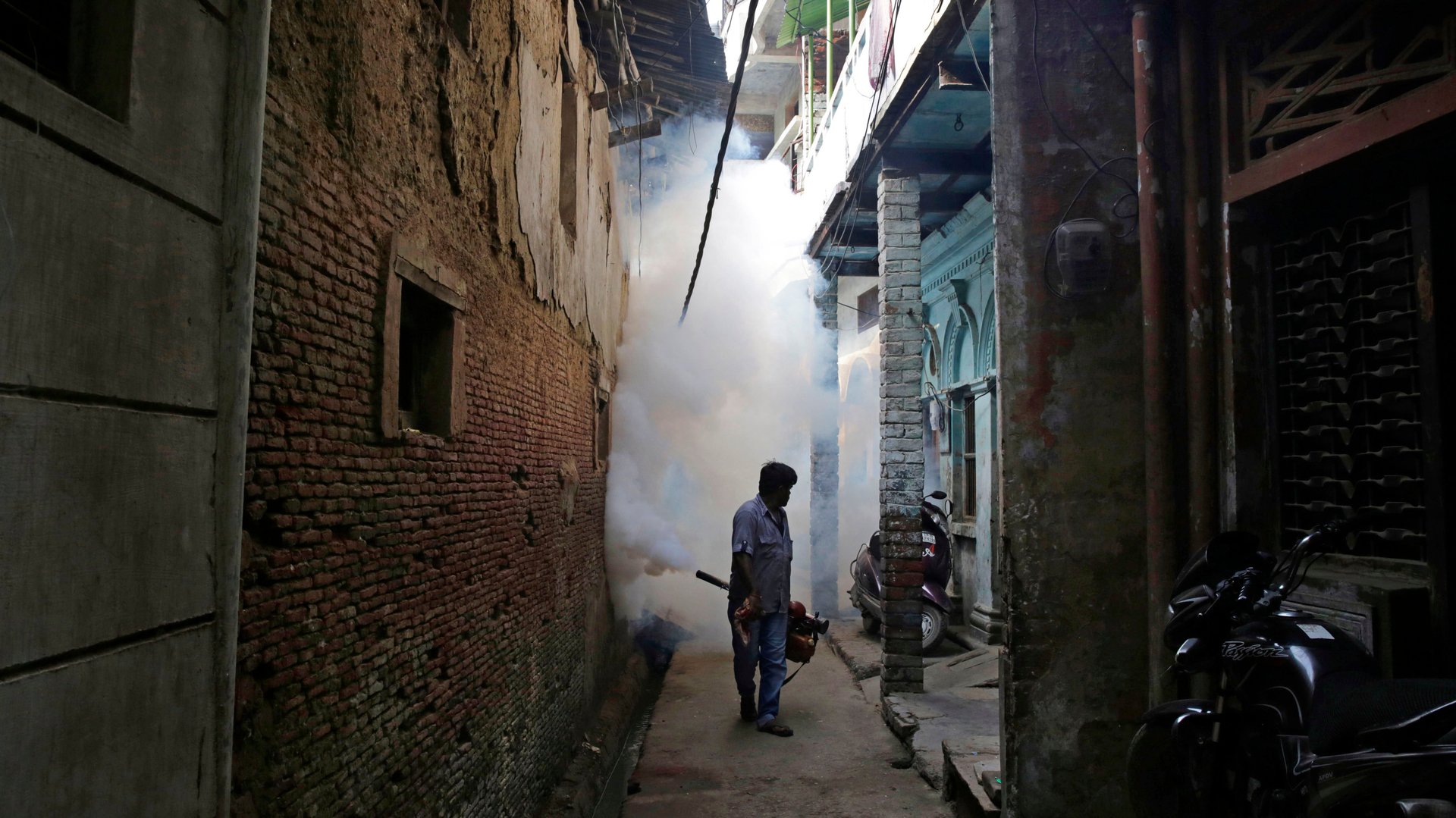There is a frightening health crisis unfolding in India’s capital
India’s capital has been inundated with cases of frightening mosquito-borne diseases the past few weeks.


India’s capital has been inundated with cases of frightening mosquito-borne diseases the past few weeks.
New Delhi, home to over 16 million people, has seen an increase in diseases, such as chikungunya, dengue, and malaria, that altogether have killed 11 and affected some 2,000 people so far this year.
In the last week alone, Delhi saw a staggering 90% rise in cases of chikungunya, spread by the Aedes albopictus species. The symptoms of this disease include high fever, joint pains, and sometimes even resulting in death.
More than 1,150 cases of dengue, spread by the Aedes aegypti mosquito, and 21 cases of Malaria, too, have been reported this year till now. In 2015, over 15,000 dengue cases were reported, with 60 people dying.
What’s worrying is that over the next few months, more people are likely to be at risk. The months of September and October are generally considered the peak season for vector-borne diseases.
The state health minister, who was in Goa till yesterday (Sept. 13) has blamed the media for spreading panic. “There has never been any death due to chikungunya in the world,” Delhi’s health minister Satyendra Jain said. “Prove it medically. Medically chikungunya can never be the cause of anyone’s death.”
The minister’s comments came after the fifth chikungunya death was reported in New Delhi.
The Narendra Modi government is monitoring the situation closely.
“A meeting has been called tomorrow morning which I’ll be reviewing myself,” JP Nadda, India’s health minister, said. “No one should panic, may it be chikungunya or dengue. There is a need to take symptomatic treatment and increase liquid intake.”
Meanwhile, the crisis has sparked a bitter battle between the Delhi government and the Modi administration.
The Arvind Kejriwal-led state government, which stormed to power last year, claims it has been rendered toothless. Much of that is because in August the Delhi high court ruled that the city’s lieutenant governor, who works under the instructions of the central government, is the administrative head and isn’t bound by ministers’ advice. For a while now, Kejriwal has been unsuccessfully demanding complete statehood for Delhi.
Kejriwal’s ill-timed tweet has evoked anger on social media. Modi’s Bharatiya Janata Party even asked him to quit.
Residents are also angry that none of the key state ministers, including Kejriwal, who is in Bangalore, is in the national capital at a time when the city is battling this epidemic. Jung, too, is in the US at the moment.
Meanwhile, New Delhi faces a severe shortage of beds for patients, with the current availability at three beds per 1,000 people, much less than the recommended five per 1,000. Kejriwal’s government has now announced 1,000 more beds across hospitals to deal with the crisis and has fixed prices for diagnostic tests.
Last year too, the state government had asked hospitals to procure 1,000 new beds. It is unclear if this was implemented.